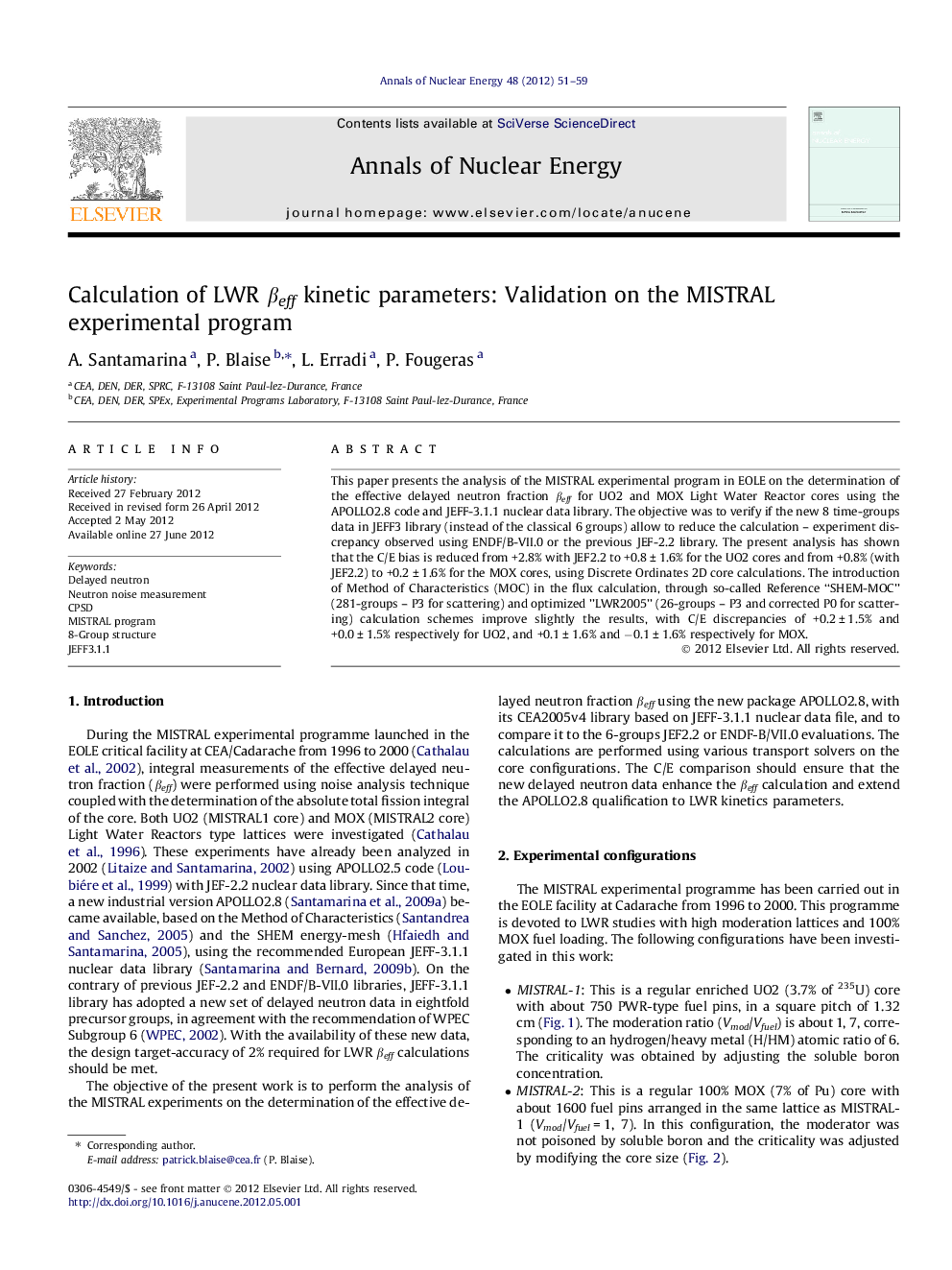| Article ID | Journal | Published Year | Pages | File Type |
|---|---|---|---|---|
| 1728875 | Annals of Nuclear Energy | 2012 | 9 Pages |
This paper presents the analysis of the MISTRAL experimental program in EOLE on the determination of the effective delayed neutron fraction βeff for UO2 and MOX Light Water Reactor cores using the APOLLO2.8 code and JEFF-3.1.1 nuclear data library. The objective was to verify if the new 8 time-groups data in JEFF3 library (instead of the classical 6 groups) allow to reduce the calculation – experiment discrepancy observed using ENDF/B-VII.0 or the previous JEF-2.2 library. The present analysis has shown that the C/E bias is reduced from +2.8% with JEF2.2 to +0.8 ± 1.6% for the UO2 cores and from +0.8% (with JEF2.2) to +0.2 ± 1.6% for the MOX cores, using Discrete Ordinates 2D core calculations. The introduction of Method of Characteristics (MOC) in the flux calculation, through so-called Reference “SHEM-MOC” (281-groups – P3 for scattering) and optimized ”LWR2005” (26-groups – P3 and corrected P0 for scattering) calculation schemes improve slightly the results, with C/E discrepancies of +0.2 ± 1.5% and +0.0 ± 1.5% respectively for UO2, and +0.1 ± 1.6% and −0.1 ± 1.6% respectively for MOX.
► βeff measurements were performed and compared to calculations schemes and nuclear data evaluations. ► The 8-group time-structure induces major C/E improvements, largely within uncertainty limits. ► The ENDF/B-VII.0 evaluation underpredicts the βeff by almost 2% for both UOX and MOX lattices. ► The flux solver effect is of second order in the C/E, but only if core calculation is performed.
